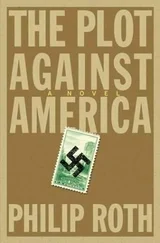Satter is described as having threatened Bayrock employees with violence. Even after he left Bayrock, Satter kept a relationship with Trump including an office. AP reported that Satter used business cards that claimed he was a “Senior Advisor to Donald Trump.” 19
Donald Trump announced his plans for Trump SoHo, a 46-story condominium-hotel in New York, on a 2006 episode of The Apprentice . For the project, Trump partnered with development companies the Sapir Organization and the Bayrock Group. The Sapir Organization was founded by the late Tamir Sapir, an émigré from the former Soviet republic of Georgia who quickly made millions on New York real estate in the 1990s. In 2006 his son Alex assumed the reins of the company. Of the elder Sapir, Charles Bagli wrote in The New York Times :
He landed in New York in 1976, where he drove a cab for three years before borrowing $10,000 against his taxi medallion to open a small electronics store. The store, at 200 Fifth Avenue in the Flatiron neighborhood, became a wholesale outlet for Soviet diplomats, K.G.B. agents and Politburo members. 20
Tamir Sapir’s son-in-law, Rotem Rosen, was also involved in the SoHo project. Ben Schreckinger wrote in Politico :
During the Cold War, Tamir Sapir, an émigré from the Soviet Union, sold electronics to KGB agents from a storefront in Manhattan. Alex Sapir’s business partner Rotem Rosen is a former lieutenant of the Soviet-born Israeli billionaire Lev Leviev, an oligarch with longstanding ties to Vladimir Putin who counts the Russian president as a “true friend.” 21
From the start, Trump SoHo had a hard time attracting buyers, in part because zoning laws restricted owners to living in the units 120 days of the year. When the owners weren’t there, units would be used as hotel rooms and owners would share part of the profit. It was soon revealed, however, that potential buyers were told inflated estimates of the number of units sold. Within months of the opening, a group of condo buyers filed a lawsuit alleging fraud against Trump, the Bayrock Group, and the Sapir Organization. According to Reuters :
The complaint said the defendants in sales pitches and to the media during the first eighteen months of marketing advertised that the building was “30, 40, 50, 60 percent or more sold.” Instead, when the offering plan went effective, buyers learned that just 62 of the 391 units, or 16 percent, had been sold, the complaint said. A minimum of 15 percent was needed for the plan to be effective. 22Then, in November 2011, Trump agreed to a settlement, without admitting wrongdoing. The buyers received 90 percent of their deposits. Mike McIntire of The New York Times writes:
The backdrop to that unusual denouement was a gathering legal storm that threatened to cast a harsh light on how he did business. Besides the fraud accusations, a separate lawsuit claimed that Trump SoHo was developed with the undisclosed involvement of convicted felons and financing from questionable sources in Russia and Kazakhstan. And hovering over it all was a criminal investigation, previously unreported, by the Manhattan district attorney into whether the fraud alleged by the condo buyers broke any laws, according to documents and interviews with five people familiar with it. The buyers initially helped in the investigation, but as part of their lawsuit settlement, they had to notify prosecutors that they no longer wished to do so. The criminal case was eventually closed. 23
The property was foreclosed on and put up for sale in 2014. 24
The Americans in the Pocket
Once Trump took on the Presidential campaign he also managed to acquire the most controversial of all the Putin-associated characters: Paul Manafort.
Before becoming Trump’s campaign manager, Manafort was known as the leader of the “Torturer’s lobby” while working for the law firm of Black, Manafort Stone & Kelly. 25They represented some of the worst dictators in the world including Mobutu Sese Seko of Zaire, The Filipino President Ferdinand Marcos, and the brutal Angolan warlord Jonas Savimbi. Manafort has also been an advisor to the Trump kingdom since the mid-1980s.
Manafort’s shadowy dealmaking could best be described in a bribery caper in France known as “The Karachi Affair.” Manafort was hired to advise Edouard Balladur, a mentor to former French Prime Minister Nicholas Sarkozy, with payments from a Lebanese arms dealer, Abdul Rahman al-Assir, chairman of Interstate Engineering. 26
The case was part of the failed 1995 French presidential campaign. 27Al-Assir paid Manafort to advise Balladur in the campaign. At the core of the controversy was the sale of three French Agosta 90 class submarines, which Al-Assir helped to sell to Pakistan for $950 million. A French probe speculated that Balladur’s campaign was being funded in part by bribes from those weapon sales. He also received a $250,000 loan from a Middle East arms dealer. 28This was a pretty typical deal for Manafort; seemingly unscrupulous but legal.
Manafort took on the unenviable task of replacing Corey Lewandowsky. Initially it was smooth sailing for Manafort before he was removed as the chief advisor. Then the revelations about the Ukraine deals surfaced. Manafort was coming under fire for his work with past clients in Ukraine, including work for Viktor Yanukovych in a 2010 campaign. 29Manafort’s efforts with Yanukovych included getting him to stop speaking Russian in public statements. Manafort worked for Serhiy Lyovochkin, former chief of staff to Yanukovych. Also part of the focus on Manafort relates to his involvement with shell companies that he has profited from.
In 2005, Manafort was working for mining tycoon Rinat Akhemetov along with Manafort partner Rick Gates, Konstantin Kilimnik, and the “International Republican Institute” of Moscow. 30Manafort represented Dmytro Firtash, a gas “tycoon” who is wanted by the U.S. Manafort was also named as a defendant in a civil racketeering case with Firtash filed by Yulia Tymoschenko, the golden-haired leader of the Orange Revolution. According to U.S. Ambassador William Taylor, in cables released by Wikileaks, Firtash admitted having ties to Seymon Mogilevich, an organized crime boss in Russia. 31, 32
Manafort was sued in a Cayman Island court over abusing his investment money. The plaintiff was the president of the largest aluminum company in the world, Oleg Deripaska, who said Manafort has not accounted for the use of the funds or returned them. 33Russian investors filed a petition that claimed they invested $26 million into buying a Ukrainian cable company. Surf Horizons was trying to reclaim its investment from Pericles. Manafort was ordered to be deposed in that case in 2015. 34The U.S. government revoked Deripaska’s U.S. visa in July 2006, and he sought to have it restored. In 2007, Manafort and Deripaska sought to establish “Pericles Emerging Market Investors,” investing in Russia and Ukraine. Manafort helped to arrange meetings between Senator John McCain and Deripaska.
Manafort was a close paid advisor to Trump. On August 14, 2016, The New York Times published a story “Secret Ledger in Ukraine lists cash for Donald Trump’s campaign chief,” which detailed Manafort’s relationships with Viktor Yanukovych, the deposed president of the Ukraine and close Putin loyalist. Before his abrupt departure and exile in Russia, Yanukovych was a master manipulator of Ukrainian politics. He hired Manafort to help with some of that manipulation. When he escaped a popular uprising against him it was a severe blow to Russia, as the people had been agitating to get closer to the Europe and NATO.
Manafort’s dilemma following the disclosure of the ledgers, numbering around four hundred pages, was that he claimed to have never worked for either the Russian or Ukrainian governments. The handwritten ledgers reflect large projects including sales of a Ukrainian cable company under the Pericles banner. 35They show cash payments for Manafort over a period ranging from 2007 to 2012. The article also claims that Manafort never registered his work as a “foreign agent” as required with the U.S. Department of Justice.
Читать дальше











